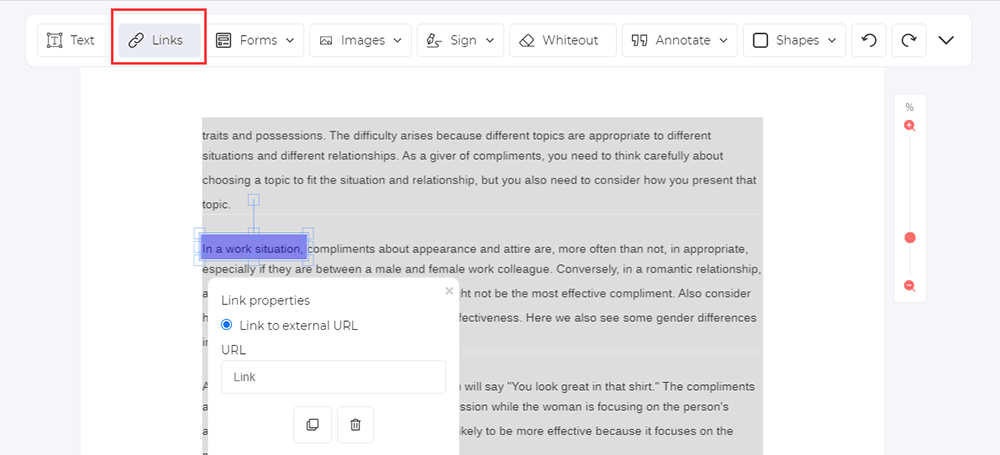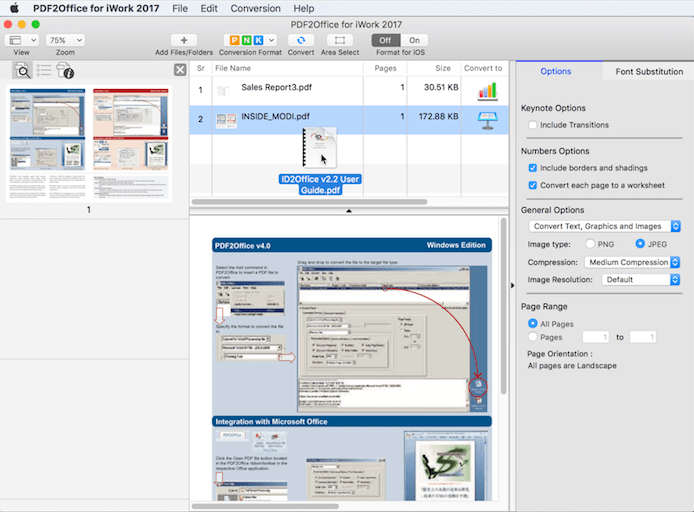
- #Convert keynote to pdf with hyperlinks pdf#
- #Convert keynote to pdf with hyperlinks pro#
- #Convert keynote to pdf with hyperlinks mac#
I started that project using Pages to produce the PDFs. One of my volunteer projects involves generation of dozens of PDFs which are then reviewed by health care professionals, who are generous with suggestions for revisions. – is there in my database and is completely editable with the click of a button in the database. When images are involved, the copy/paste isn’t as convenient into Papyrus as into Pages, as I have to make a second pass to copy/paste in an image.īut that inconvenience is more than made up for by the much more powerful capabilities of Papyrus and by the fact that every feature of the resulting document – text, images, layout, hyperlinks, etc. Now I copy my rich text notes and paste them into Papyrus 12. For a while I’ve been using Pages to polish the final version.
#Convert keynote to pdf with hyperlinks pro#
I still like to do most of my writing and editing inside DT Pro using rich text, as my information resources are right at my fingertips. It’s a very competent word processor with good capabilities for outlining and lists using styles, footnotes and endnotes, bibliographic cites (using a built-in database), useful layout options, hyperlink management and capable table and spreadsheet features.
#Convert keynote to pdf with hyperlinks pdf#
Papyrus 12 is the first word processor that meets my “fully compatible” criteria, as it can produce fully editable PDF files. By fully compatible I mean not only that the text and other content such as layout and images could be viewed in DT Pro just as designed in the word processor, but that the file viewed in DT Pro is completely editable by and synchronized with the word processor, so that changes to the file become available to the database when the file is saved. Until very recently there simply has been no word processor above the level of TextEdit that could produce files fully compatible with DT Pro. But it does permit one to capture important information into a database. That does, of course, require a conversion, hence a duplication of files.

So one’s Pages, Mellel, KeyNote, Excel or even Word documents can be captured into a database in that way. To the degree that’s possible, it will assist users to expand the present universe of file types recognized by DT Pro and DT PE, so that the information content of their databases can grow.Īt the moment, PDF files offer the most universal way to capture information from unrecognized file types, and DT Pro includes a script that will let one capture the information content, including text, images, format and layout of “unrecognized” documents, using the “print to PDF” capability of OS X. I expect that future versions of DT Pro will be able to capture text from, and perhaps even render more or less well additional file types. To do that would require, in essence, building a Word application (or fully compatible Word application) into DT Pro.ĭT Pro can’t even capture the text of Pages, Mellel, Powerpoint, KeyNote, OmniOutliner 3 and many other proprietary file types at this time, much less render their files.


So DT Pro can’t render the “full” appearance and content of a Word file. OS X can read and capture RTF text from Word, but not all the attributes of a Word document. doc files can be partially captured, but not rendered in their original form. Third, DT Pro can read the text of and render very well PDF files, using Apple’s PDFKit code. Second, HTML and WebArchive files permit text capture, and even pretty good rendering, of those file types using Apple’s WebKit code. For many of these DT Pro relies on Apple’s Cocoa text code.

Which one? First, many (but not all) text-based files such as plain text, RTF, RTFD, csv and a good many more.
#Convert keynote to pdf with hyperlinks mac#
There are a great many file formats in the Mac world, and many of them contain text, images and other information.ĭT Pro depends heavily on OS X to capture text from, and even render, some of those file types.


 0 kommentar(er)
0 kommentar(er)
